In the late afternoon, I continue my hike along the World Heritage Trail under splendid sunshine in Melk. I park in the Danube at the Wachauarena car park, where an exciting theatre festival takes place every summer, and cross the bridge to the old town of Melk.
Baroque Melk Abbey#
Melk Abbey towers impressively on a rock above the old town centre. It was founded in 1089. However, today’s appearance no longer has much to do with the original monastery. This is because it was thoroughly renovated in the 18th century and replaced by a magnificent baroque building. The library houses numerous manuscripts and incunabula that were produced by the monks of the local Benedictine order in the Middle Ages.
The Melk Abbey Library has also found its way into modern world literature. In his historical novel “The Name of the Rose “, Umberto Eco had the narrator of the story, Adson von Melk, lead a simple monastic life in Melk Abbey. According to Eco, Adson had written a manuscript in Melk about his experiences in Italy, which Eco then surprisingly found in the Melk Abbey library in the 20th century. For Eco, Melk and Italy are linked by the library and the founder of the Benedictine order, Benedict of Nursia, who lived in central Italy in the 6th century and whose rules are still followed by the monks in Melk today. “Ora et labora.” Pray and work.
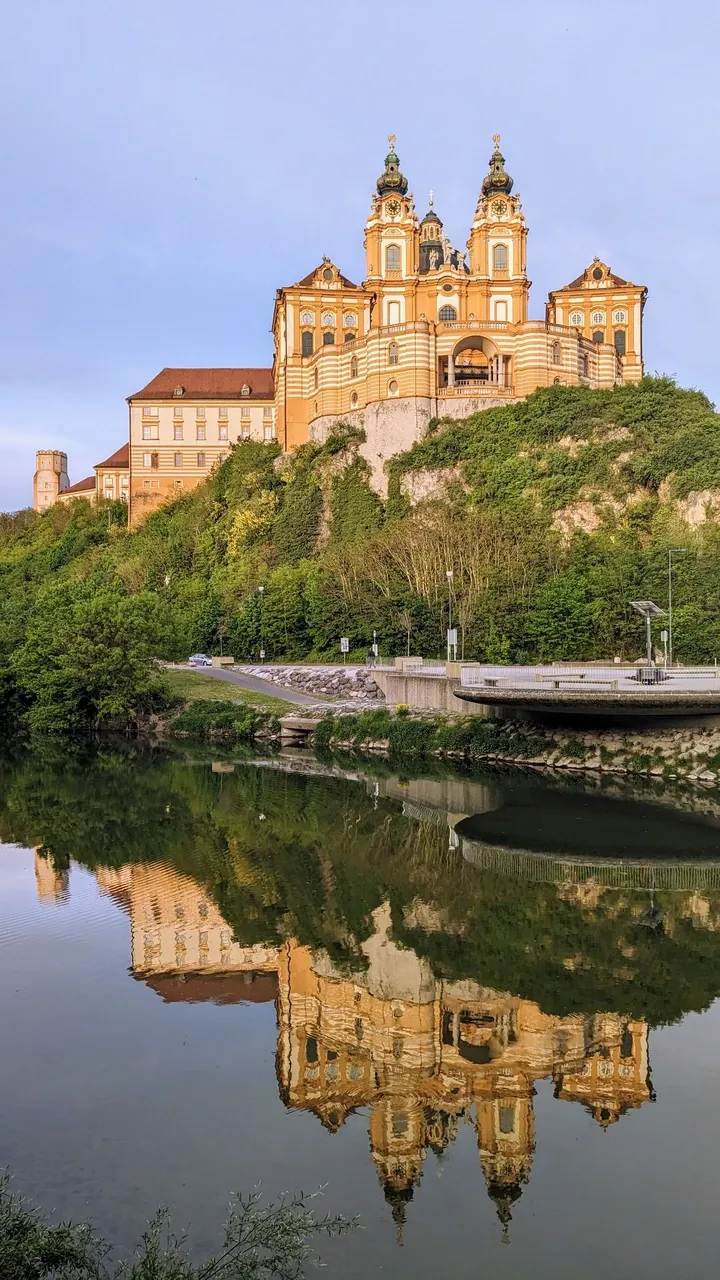


I take it easy in the town and enjoy the atmosphere. A small town festival attracts lots of locals and tourists. There’s a lot of hustle and bustle. Music is playing, people are laughing and children are jumping in the bouncy castle. I treat myself to an ice cream - two scoops - and then off to the abbey via stairs. You can visit the library, an exhibition and the collegiate church if you want to find out more about the abbey and marvel at the architecture.
Across the Pielach#
After the abbey, the old town of Melk ends and a longer section through the city’s industrial and business district follows. If you need provisions for the route or the next few days, you can stock up here. Otherwise, it is a boring section next to a busy road, which is why I choose an alternative route.
The alternative follows the Austrian Way of St James and the European long-distance hiking trail E6 and is well signposted. It leads through the village of Spielberg, where I cross a footbridge over the Pielach to Pielachberg. A glance into the crystal-clear Pielach reveals countless fish cavorting in front of the Spielberg weir. I wonder if one of them is a rare, large Huchen (Danube salmon)? The Pielach is one of the few remaining rivers with a natural Huchen population in Austria.
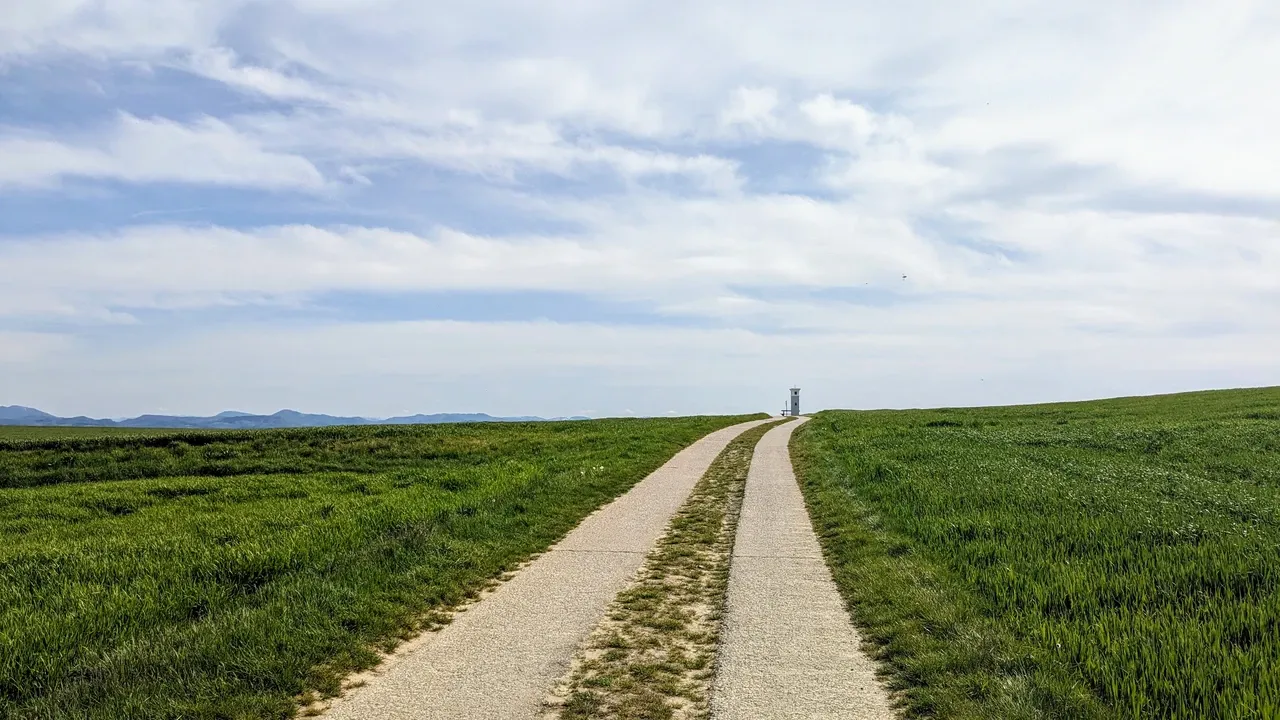
The first long climb of the day begins in Pielachberg. Up to the Jonaskreuz, from where I have a view of the Ötscher and the Alps, I climb a good 150 metres on road. The ascent is without shade and the heat makes me sweat profusely. I therefore take a short break at the Jonaskreuz for a drink. There is also a bench to rest on. From now on, the surface finally changes from tarmac to gravel.
Schönbühel Castle#
From Jonaskreuz, the route now descends back down to the Danube and Schönbühel, where another highlight of this stage, Schönbühel Castle, awaits. The castle with its striking tower stands on a rocky outcrop, slightly behind it is the former Servite monastery Schönbühel, which is concealed by the castle.
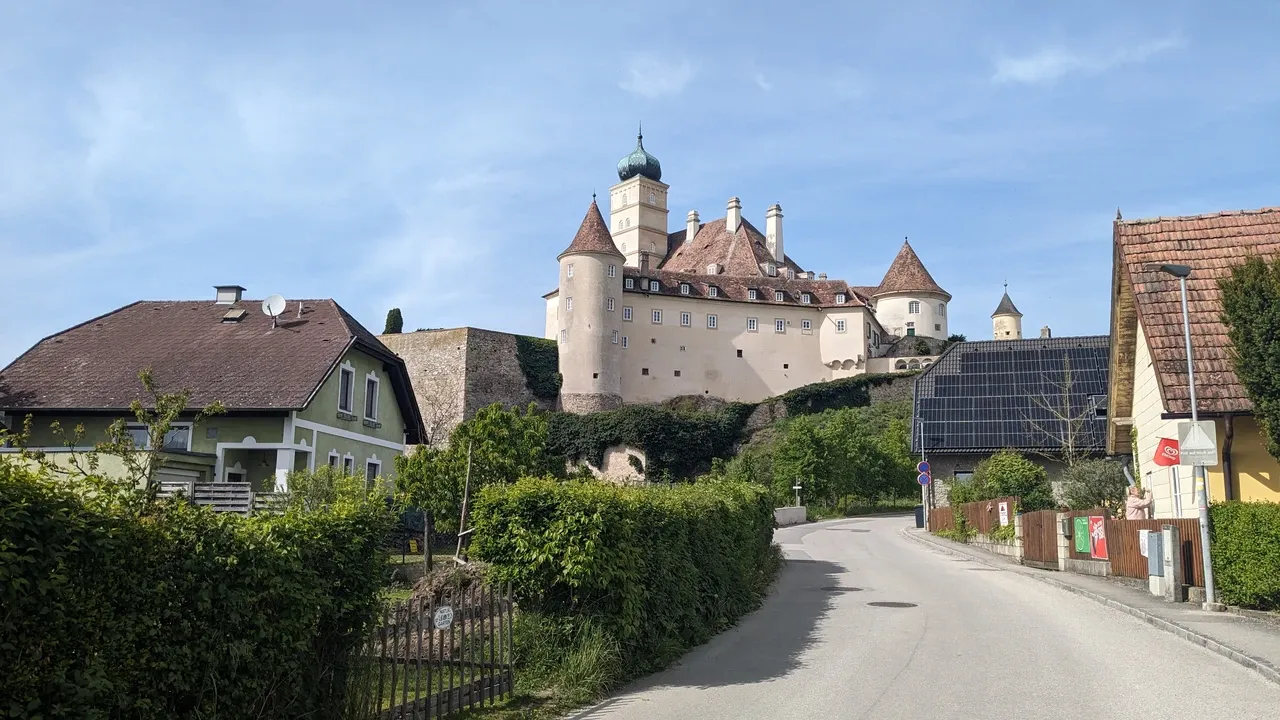
This ensemble can be easily recognized from the Danube, for example from a boat trip. The second and final ascent of this route starts at the castle, but it is also considerably longer and more strenuous than the first.

The former main road of the village runs steeply up to the castle. The route then leads back to Schönbühel until I finally find my way to Berging on country lanes and meadows. The path is a little overgrown with grass, but not difficult to find. Looking back over the lush green meadows, I notice Melk Abbey, my starting point. I’ve already come a long way.
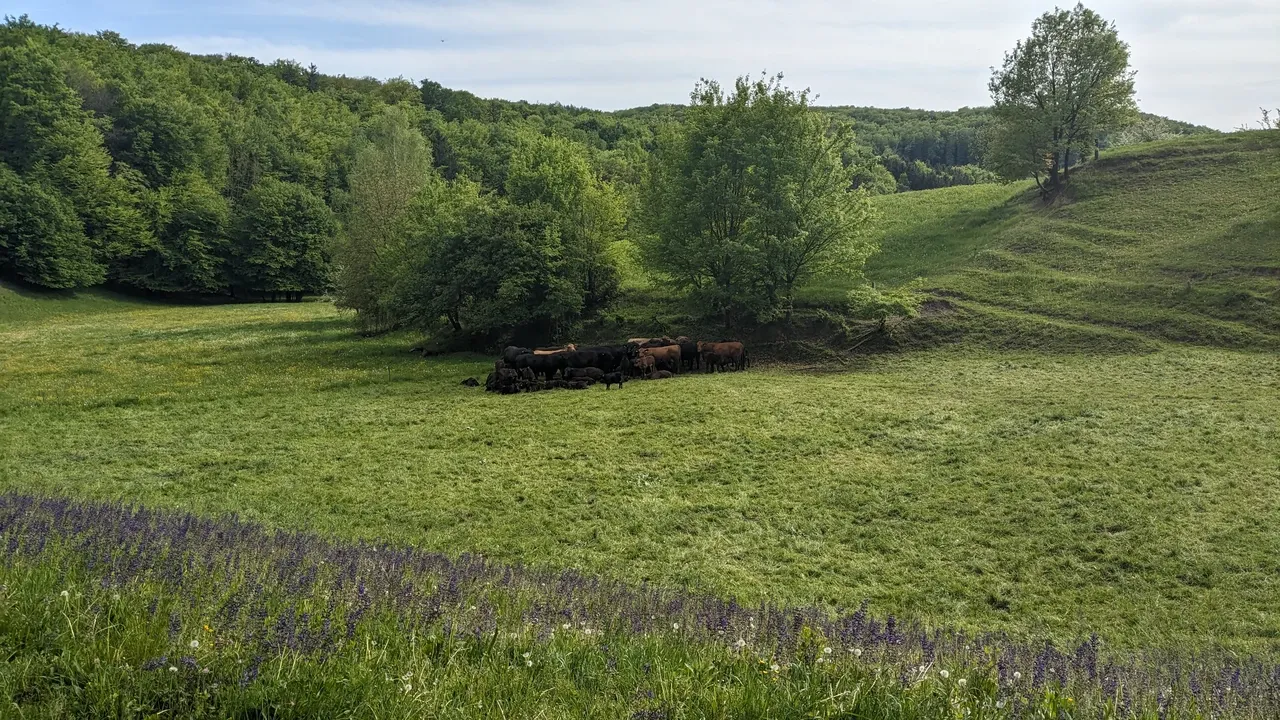
Shortly after Berging, I come across a herd of Angus cattle grazing the flower meadows here. They are standing close together and resting in the shade. So far, the path has been in the sun throughout and the trees have hardly provided any shade. Good sun protection is definitely important for this part of the hike. But now that is changing.
Off into the Dunkelsteinerwald#
I head into the cooling forest, which extends almost all the way to Aggstein village with brief interruptions. I run partly on wide forest roads, partly on smaller, older forest roads and partly on small tracks. Fortunately, there is not much low vegetation, which makes it easy to make progress, apart from the incline of course. The forest is characterized by spruce, beech and ash trees.
I reach the highest point of the stage at the beech tree in the picture at 512 metres. A few benches invite you to rest and sunbathe, otherwise there is not much to see apart from the old beech trunk on which a picture of the Virgin Mary has been nailed. It is therefore a small forest chapel. This is my last break before the path descends steeply to Aggsbach Dorf.
It’s not quite so easy to get down safely. The path is steep, and I have to watch out for leaves to avoid slipping. At the same time, the leaves also cover the ground. It could be tricky in wet conditions. I also have to go round fallen trees twice. My progress is slower than expected.
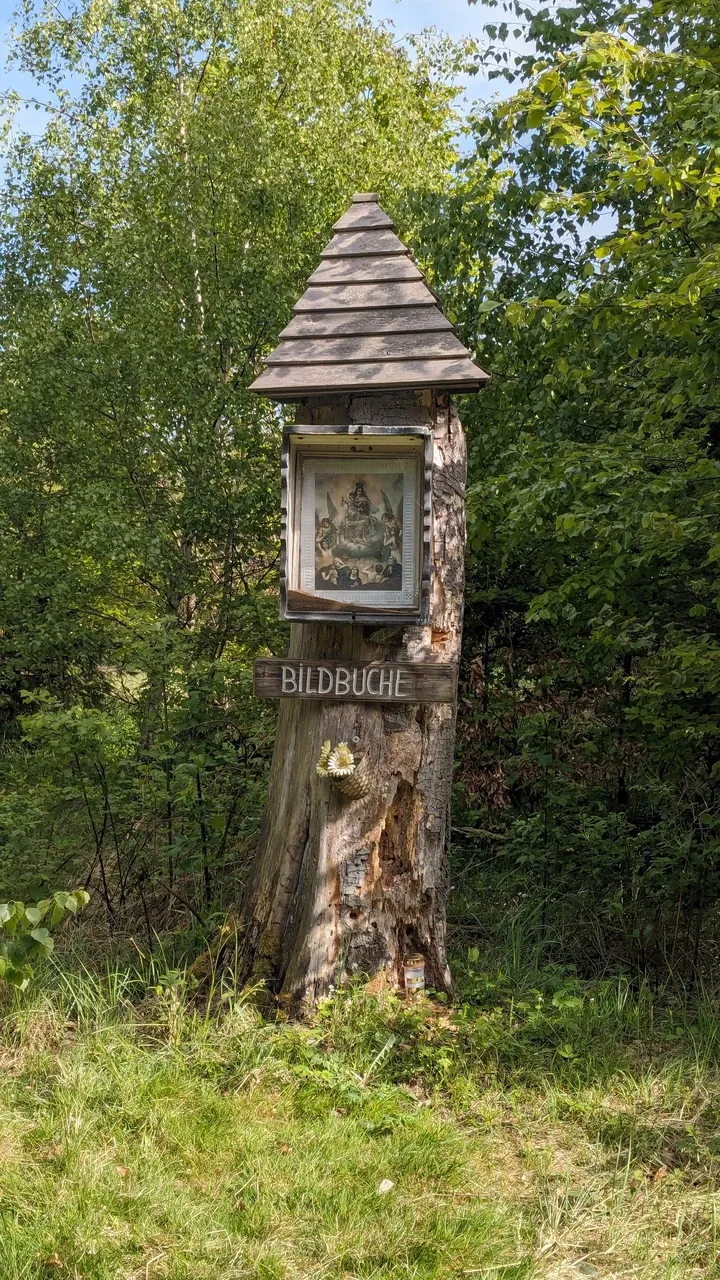
But the ridge path also has its advantages. The forest thins out a few times, allowing me to catch a glimpse of the Aggstein ruin, which sits on the following ridge and oversees the Danube here. I almost didn’t see it, however, because a lone tree obscured the ruins. But just a few steps forward, and I was able to make out its stone structure in the dark green sea of trees. Once I reach the bottom, the stamp for this stage is waiting for me. I then walk along the Aggsbach stream to the former smithy, where I finish the stage.
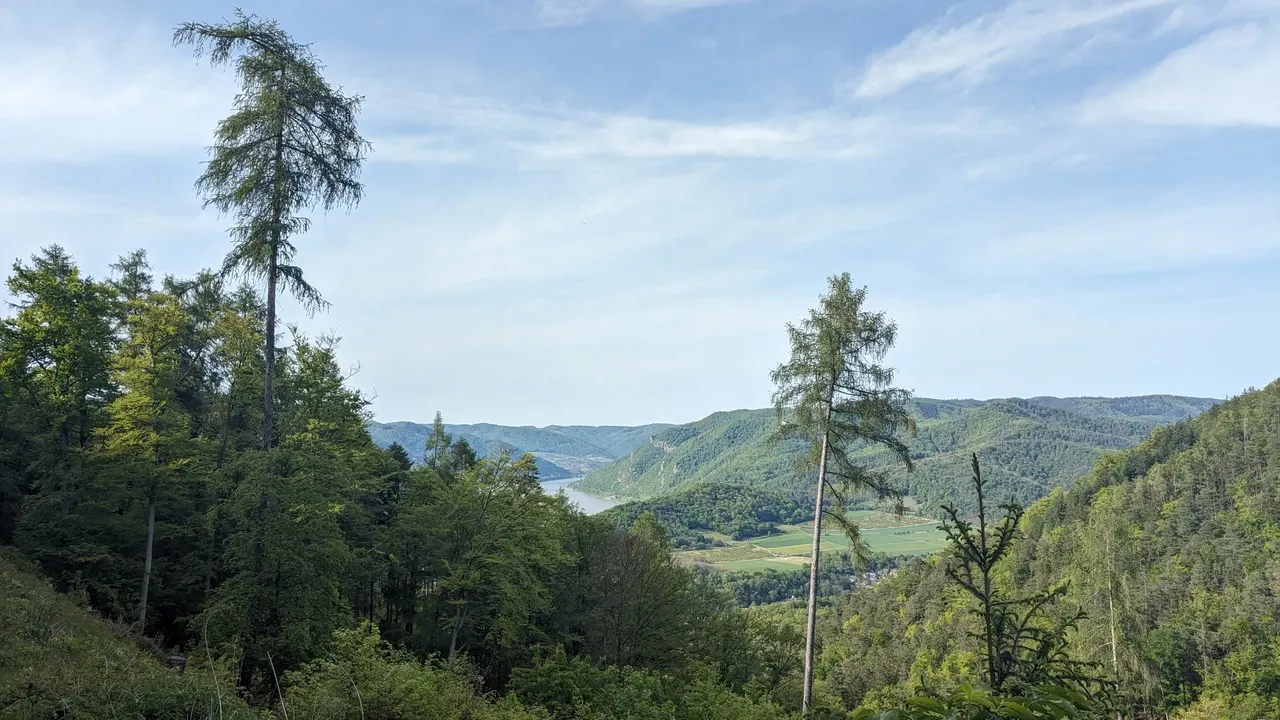
After the last few stages of the World Heritage Trail were rather boring, I was pleasantly surprised this time. Although there are still no vineyards here, the two sights, Melk Abbey and Schönbühel Castle, make up for this. There is also a wonderful panorama of the Danube and the Alpine foothills.
Mishap: The original plan was to take a Nextbike again. But unfortunately there were none left in Aggsbach Dorf, so I had to walk back on the cycle path.
